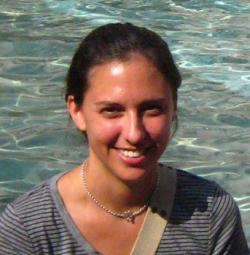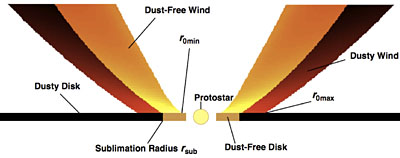 |
 |
 |
 |
 |
 |
 |
 |
 |
 |
 |
 |
|
Talks & Events
|
Ph.D. Thesis Defenses: 2013
The effect of the nuclear burning during the deflagration on the final observables in Supernovae type Ia PhD Committee members: Don Lamb, Joshua Frieman, Fausto Cattaneo Thesis Abstract: A common model of the explosion mechanism of type Ia supernovae is based on a delayed detonation of a white dwarf (WD) in which deflagration precedes detonation. We study one of the delayed detonation models, Gravitationally Confined Detonation (GCD), in two-dimensional simulations, and we discuss a range of the final theoretical observables that can plausibly account for the variety of observed events. Furthermore, we probe the pulsational character of the WD due to the deflagration and its effect on the final observables in one-dimensional studies. Two-dimensional GCD models with different ignition conditions, parametrized by the number of ignition bubbles and their locations relative to the center of the WD, were performed. The initial ignition led to the development of the subsonic burning flame which in turn generated nuclear burning energy from C and O burning. Depending on the unique initial condition, different amount of nuclear burning energy was released during the deflagration, and at large the star detonated as either a Classical GCD or a Pulsationally-assisted GCD. Furthermore, we have shown a correlation between the amount of nuclear burning that occurs during the deflagration phase and the final abundances of intermediate mass elements such as Si-group. Lastly, the distribution of the ejecta during the homologous phase was studied for each model. In addition, we create simplified one-dimensional models that test mainly the effects of the pre-detonation stellar internal velocity profile and the post-detonation velocity of expansion on the production of alpha-particle nuclei, including 56Ni. We observe two distinct post-detonation expansion phases: rarefaction and bulk expansion. Almost all the burning to 56Ni occurs only in the rarefaction phase, and its expansion timescale is influenced by pre-existing flow structure in the star, in particular by the pre-detonation stellar velocity profile. We find that the mass fractions of the alpha-particle nuclei, including 56Ni, are tight functions of the empirical physical parameter den_up/v_down, where den_up is the mass density immediately upstream of the detonation wave front and v_down is the velocity of the flow immediately downstream of the detonation wave front. We conclude that the properties of the pre-existing flow, in particular the internal stellar velocity profile, influence the final isotopic composition of burned matter produced by the detonation. Dynamo Action in Taylor Couette Flow PhD Committee members: Paul Fischer, Mike Gladders, Arieh Konigl, Bob Rosner. "Krista has studied the development of turbulence and dynamo action by the Magneto-Rotational Instability in centrifugally stable, differentially rotating systems. Her results have direct applications to the problem of the origin of turbulence and enhanced angular momentum transport in astrophysical accretion discs." - Fausto Cattaneo, PhD advisor Progress towards a detection of inflationary B-modes with the BICEP2 and KECK array polarimeters A Measurement of the Cosmic Microwave Background Polarization with SPTpol PhD Committee members: Hsiao-Wen Chen, Steve Meyer, Scott Dodelson Thesis Abstract: We present maps of the cosmic microwave background (CMB) polarization at 90 and 150 GHz measured with SPTpol and the first EE and TE CMB power spectrum measurements from SPTpol. We also describe the SPTpol instrument in detail. We discuss the development of the SPTpol camera including the cryogenic design and the transition edge sensor (TES) detectors developed at NIST and Argonne National Laboratory. The goals of the SPTpol project are to exploit the high resolution of the telescope (1 arcminute beam) and the high sensitivity afforded by the 1536 detector camera to measure the E-mode power spectrum of the CMB, characterize the B-mode polarization induced by the gravitational lensing of the primordial E-mode CMB polarization, and to detect or set an upper limit on the level of the B-mode polarization from inflationary gravitational waves. This thesis is a first step toward accomplishing these goals. Large-scale Magnetic Fields in Protoplanetary Disks PhD Committee members: Fred Ciesla, James Truran, Michael Gladders, Andrey Kravtsov Thesis Abstract: In this talk I will review how large-scale magnetic fields affect protoplanetary accretion disks. I will focus on fields that give rise to magneto-rotationally driven disk-winds, and show how these outflows can lead to unique observational signatures in young stellar objects. I will also discuss how these fields can affect the disk dynamically, particularly how they influence the orbital migration of low-mass planets. |





